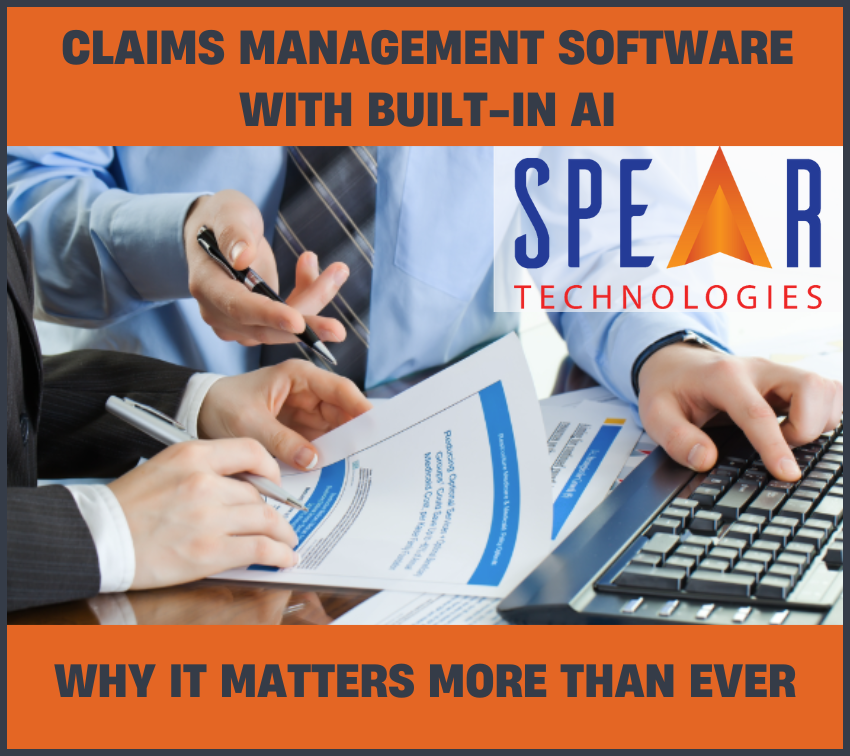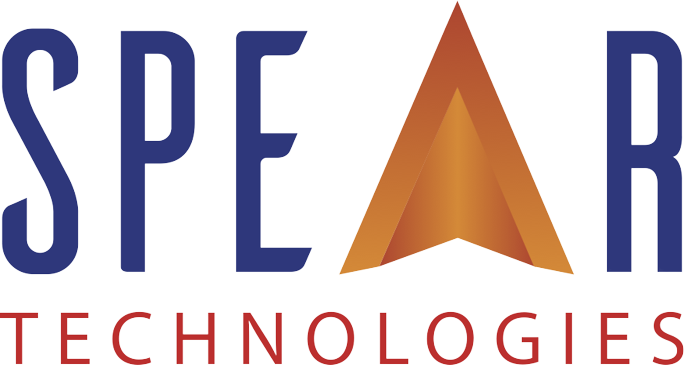Claims Management Software with Built-In AI: Why It Matters More Than Ever

In the world of insurance, terms like Claims Management Software, Claims Management System, and Claims Management Solution are often used interchangeably. They all refer to the digital backbone that enables insurers to process, manage, and resolve claims. But when it comes to Artificial Intelligence for Insurance, the differences between modern claims management software with built-in AI and legacy systems can be more than semantic—they can be transformative.
Not all AI is created equal. And in the race to modernize claims operations, understanding the difference between Built-In AI and Bolt-On AI can determine whether your insurance organization is future-ready—or falling behind.
The Rising Demand for AI-Powered Claims Management
Today’s insurers are under growing pressure to manage rising claim volumes, meet increasing customer expectations, and contain costs—all while improving accuracy and compliance. As a result, Claims Automation Software has become an essential component of modern Insurance Software Solutions.
Yet, simply layering artificial intelligence on top of legacy systems—what many vendors refer to as “bolt-on AI”—doesn’t deliver the intelligence or integration needed for optimal performance. True transformation comes from Claims Management Systems that have Built-In AI from the ground up.
Built-In vs. Bolt-On AI: Understanding the Difference
Bolt-On AI is typically retrofitted to an existing platform, requiring additional integration layers, middleware, or manual processes to function. It may solve isolated problems—like fraud detection or document classification—but it rarely works holistically across your claims workflow.
Built-In AI, on the other hand, is embedded directly into the Claims Management Software architecture. That means it can interact natively with every part of the system—data intake, triage, routing, documentation, adjuster workflows, and more—delivering real-time intelligence and automation across the entire claim lifecycle.
This integrated approach enables more advanced capabilities such as:
- Intelligent First Notice of Loss (FNOL)
- Automated triage and assignment
- Dynamic document handling
- Proactive fraud detection
- Predictive Risk Assessment for Insurance
You need to be careful here – many of the core systems that claim to have built-in AI in fact have bolted it on themselves while claiming to have native integration. Look closely at the architecture when evaluating!
The Business Value of Built-In AI in Claims
When AI is built into your Claims Management Solution, insurers benefit from:
- Faster Claim Resolution – With Claims Automation Software, routine processes are streamlined, accelerating cycle times and boosting customer satisfaction.
- Improved Accuracy and Consistency – Built-in AI helps reduce errors and variance in adjuster decision-making, improving outcomes and reducing leakage.
- Smarter Risk Assessment Insurance – Embedded machine learning models continuously analyze data to refine risk scoring and prioritization.
- Greater Operational Efficiency – Insurers can do more with fewer resources by automating repetitive tasks and enhancing adjuster productivity.
- Lower Total Cost of Ownership – Compared to bolt-on tools that require constant maintenance, Insurance Software Solutions with built-in AI offer a cleaner, more scalable approach.
Making AI Accessible to Insurance Teams
A key advantage of Built-In AI is its accessibility. With modern platforms, insurers no longer need data scientists to benefit from AI. Accessible AI means business users, claims managers, and executives can interact with models, review recommendations, and make informed decisions—all within the claims platform they already use every day.
This democratization of AI enables insurers to harness the power of data without the barriers of complexity.
The Future of Claims Management is Intelligent
As the insurance landscape continues to evolve, staying competitive means embracing innovation. Claims Management Systems with Built-In AI represent the next generation of Insurance Software Solutions—designed not only to process claims but to learn from them, improve outcomes, and adapt in real time.
If your current system relies on bolt-on AI or manual workarounds, it may be time to rethink your technology strategy. The future of insurance is intelligent, integrated, and automated—and it starts with the right Claims Management Software.
The Evolving Landscape of Claims Management
Modern claims operations now involve more than adjudicating and paying losses. They demand end-to-end visibility, data analysis, regulatory compliance, customer experience management, vendor coordination, and litigation oversight.
Thanks to low-code/no-code platforms, insurers and public entities can now customize and scale Insurance Software Solutions without lengthy development cycles—enabling faster innovation and improved agility
Tailored Needs by Organization Type
Every insurance organization has different operational priorities. A flexible Claims Management System should accommodate these needs:
- Carriers
- Scalability for multiple lines of business
- Integration with policy admin, billing, and reinsurance systems
- Compliance automation for state and federal requirements
- Third-Party Administrators (TPAs)
- Multi-client configuration with unique rules/workflows
- White-label capabilities and flexible client reporting
- Efficient intake and triage tools
- Public Entities
- Governmental reporting capabilities
- Long-tail exposure tracking
- Internal communication & audit trails for transparency
- Risk Pools
- Collective risk tracking and allocation tools
- Member-specific dashboards and performance metrics
- Integrated subrogation and recovery tools
- Self-Insured Organizations
- Recurring claims management (e.g., workers’ comp, health)
- Vendor and legal spend control
- Automation of FNOL and follow-up tasks
Spear’s Latest Innovations Facilitating Accessible AI:
Spear’s Next-Generation AI Capabilities leverage generative AI, predictive analytics, and intelligent automation to address key pain points for insurers and public entities.
They deliver a more seamless, intuitive experience, allowing business users to tailor AI models to their specific needs and domain realities—ensuring the AI not only works but works for them.
No developers are necessary, saving time while giving teams greater control, enhanced capabilities, and a stronger return on technology investment.
Spear’s Next-Generation AI Capabilities
- Predictive Analysis – Real-time Risk Assessment for Insurance using embedded models to flag potential litigation, fraud, or high-cost claims—triggering proactive, rule-based interventions.
- Smart Summarization – Condense claim notes, emails, and documents into actionable summaries. Reduce review time, improve collaboration, and copy content with one click.
- Claims Assistant Email Agent – AI extracts key claim data from emails and generates real-time, in-thread responses. Tone and length are customizable for accurate, professional communication.
- Automated Responses & Sentiment Analysis – Automatically generate appropriate replies based on message tone, urgency, and sentiment—alerting supervisors when escalation is needed
- Intelligent Document Processing – Extract data from policies, invoices, and medical records with high accuracy. AI maps the information directly into SpearClaims™, eliminating manual entry.
- Virtual Agents – Self-service bots that interact with vendors and stakeholders in real-time—executing tasks, answering questions, and automating decisions based on pre-set logic.
- Smart Paste – Automatically suggests form field inputs from copied text, speeding up data entry and reducing error rates.
- CoPilot Assistant – A conversational AI guide that helps users navigate SpearSuite™, surface insights, and get real-time answers using natural language queries.
A Real-World Example of Built-In AI in Action
One SpearClaims™ business-user—without writing a single line of code—successfully deployed 12 AI models to automate formerly manual tasks. The models now read invoices, index documents, trigger payments, and summarize claim notes, resulting in measurable efficiency gains across their operation.
Discover the Smarter Way to Manage Claims
Built by industry experts on Microsoft’s Power Platform, SpearClaims™ delivers true Built-In AI—not bolt-on tools. With seamless integration, customizable automation, and an intuitive user interface, it’s the ideal Claims Management Solution for future-ready insurers.
- Multiple embedded AI models
- Built-in analytics and risk scoring
- Low-code/no-code configurability
- Continuous updates from industry experts
Schedule a demo to experience how SpearClaims™ with true Built-In AI can help your team accelerate and simplify every stage of the claims process.
Request Pricing to learn how Accessible AI can fit your organization’s needs and budget.
